- Home
- Jack Kerouac
Wake Up: A Life of the Buddha Page 3
Wake Up: A Life of the Buddha Read online
Page 3
Then looking further, Where does birth come from? he saw it came from life-deeds done elsewhere; then scanning those deeds, he saw they were not framed by a creator, not self caused, nor personal existences nor were they either uncaused; he saw they themselves obtained along a further chain of causes, cause upon cause, concatenative links joining the fetters binding all that is form—poor form, mere dust and pain.
Then, as one who breaks the first bamboo joint finds all the rest easy to separate, having discerned the cause of death as birth, and the cause of birth as deeds, he gradually came to see the truth; death comes from birth, birth comes from deeds, deeds come from attachment, attachment comes from desire, desire comes fromperception, perception comes from sensation, sensation comes from the six sense organs, the six sense organs come from individuality, individuality comes from consciousness. [Here Kerouac heads off through the all-important twelve links of dependent origination.] . . . In him, thus freed, arose knowledge and freedom, and he knew that rebirth was at an end, and that the goal had been reached.
Kerouac goes on to list the four noble truths and the eightfold path. Then he opens up a more Mahayana vision:
And he knew as he sat there lustrous with all wisdom, perfect in gifts, that the way of perfect knowledge had been handed down to him from Buddhas Innumerable of Old that had come before in all ten directions of all ten quarters of the universe where he now saw them in a mighty vision assembled in brightness and power sitting on their intrinsic thrones in the Glorious Lotus Blossoms everywhere throughout phenomena and space and forever giving response to the needs of all sentient life in all the kingdoms of existence, past, present, and future.
With the discernment of the grand truths and their realization in life the Rishi became enlightened; he thus attained Sambodhi (Perfect Wisdom) and became a Buddha. Rightly has Sambodhi been called, it can be accomplished only by self help without the extraneous aid of a teacher or a god. . . . The morning sunbeams brightened with the dawn, the dustlike mist dispersing, disappeared. The moon and stars paled their faint light, the barriers of the night were all removed. He had finished this the first great lesson and the final lesson and the lesson of old; entering the great Rishi’s house of Dreamless Sleep, fixed in holy trance, he had reached the source of exhaustless truth, the happiness that never ends and that had no beginning but was always already there within the True Mind.
Not by anxious use of outward means, had Buddha unveiled the True Mind and ended suffering, but by resting quietly in thoughtful silence. This is the supreme fact of blessed rest.
He was sihibhuto, cooled.
About one quarter into the book, Kerouac describes the triumph of Buddha as world-teacher:
Thus Tathagata, He-Who-Has-Attained-to-Suchness-of-Mind and sees no more differentiation of various creatures and phenomena, who entertains no more definite conceptions of self, other selves, many divided selves, or one undivided universal self, to whom the world is no longer noticeable, except as a pitiful apparition, yet without arbitrary conception either of its existence or non-existence, as one thinks not to measure the substantiality of a dream but only to wake from it; thus Tathagata, piously composed and silent, radiant with glory, shedding light around, rose from under his Tree of Enlightenment, and with unmatched dignity advanced alone over the dreamlike earth as if surrounded by a crowd of followers, thinking, “To fulfill my ancient oath, to rescue all not yet delivered, I will follow out my ancient vow. Let those that have ears to hear master the noble path of salvation.”
A few pages later, we get a hint of where Kerouac gets his title: “For to these ancient monks, clearly perceiving birth as the cause of death, and deeds of lust as the cause of birth, the Buddha was like one standing on the bank calling to the worldly man drifting down the current ‘Ho there! Wake up! the river in your dream may seem pleasant, but below it is a lake with rapids and crocodiles, the river is evil desire, the lake is the sensual life, its waves are anger, its rapids are lust, and the crocodiles are the women-folk.’”
Kerouac homes in on the key mantra, in the words of the disciple Ashvajit: “Whatever things proceed from a cause, of them the Buddha has stated the cause and what their dissolution is. This is what the Great One teaches.” Om ye dharmah hetusvabhavah hetun tesham tathagata hi avadat tesham cha yo nirodho evam vadi mahashramanah.
Kerouac also touches on the eventual happiness of the Buddha’s father Suddhodana, and here I can imagine his fantasy of reconciliation with his own father, Leo, which never really happened, as I understand from scholars: “Having heard from his son how to cast off fear and escape the evil ways of birth, and in a manner of such dignity and tenderness, the King himself left his kingly estate and country and entered on the calm flowings of thoughts, the gate of the true law of eternality. Sweet in meditation, dew Suddhodana drank. In the night, recalling his son with pride, he looked up at the infinite stars and suddenly realized ‘How glad I am to be alive to reverence this starry universe!’ then ‘But it’s not a case of being alive and the starry universe is not necessarily the starry universe’ and he realized the utter strangeness and yet commonness of the unsurpassable wisdom of the Buddha.”
A third of the way through Wake Up, Kerouac describes the Buddha as the supreme “Dharma bum,” in an unbelievably brilliant passage I feel compelled to repeat:
Buddha accepted food both good or bad, whatever came, from rich or poor, without distinction, and having filled his alms-dish, he then returned back to the solitude, where he meditated his prayer for the emancipation of the world from its bestial grief and incessant bloody deeds of death and birth, death and birth, the ignorant gnashing screaming wars, the murder of dogs, the histories, follies, parent beating child, child tormenting child, lover ruining lover, robber raiding niggard, leering, cocky, crazy, wild, blood-louts moaning for more blood-lust, utter sots, running up and down simpleminded among charnels of their own making, simpering everywhere, mere tsorises and dream-pops, one monstrous beast raining forms from a central glut, all buried in unfathomable darkness crowing for rosy hope that can only be complete extinction, at base innocent and without any vestige of self-nature whatever; for should the causes and conditions of the ignorant insanity of the world be removed, the nature of its non-insane non-ignorance would be revealed, like the child of dawn entering heaven through the morning in the lake of the mind, the Pure, True Mind, the source, Original Perfect Essence, the empty void radiance, divine by nature, the sole reality, Immaculate, Universal, Eternal, One Hundred Percent Mental, upon which all this dreamfilled darkness is imprinted, upon which these unreal bodying forms appear for what seems to be a moment and then disappear for what seems to be eternity.
Halfway through the book, Kerouac recites his refrain: “All is empty everywhere forever, wake up! The mind is fool and limited, to take these senses, petty thwartings in a dream, as reality; as if the deeps of the ocean were moved by the wind that ripples the waves. And that wind is ignorance.”And further on, “Everything is taking place in your mind, like a dream. As soon as you wake up and stop dreaming, your mind returns to its original emptiness and purity. In truth, your mind has already returned to its original emptiness and purity, and this world is but a limping shadow. Why do you still so easily forget this natural, wonderful, and enlightened Mind of perfect Purity—this mysterious Mind of radiant Brightness?” (This seems a mix of quotes from the Shurangama Sutra.)
Then he gets down to the real heart of the Sutra:
“Look carefully! Stare through the sight of things and you will only see the Great Heart of Compassion of all the Buddhas of Old beyond belief. This is Yathabhutam, the seeing of things truly. . . . However, people of the world, spectral giants inside mind, being ignorant of the principle that governs their own existence, become bewildered in the entanglements of causes and conditions and naturalism, they think the earth carries signs of an inherent self-nature of its own and call it ‘natural’ and ‘Mother Nature’ with all the mental trees independent of their own b
odies, they think that it exists due to causes such as creation by some self-created and self-remembering Creator Self who made them after his own image and that their existence comes under the conditions of ‘time,’ atoms, seasons, celestial interventions, personal destiny, all of which are wholly the discriminations of their mental consciousness and are merely figurative words having no meaning in reality.”
(So much for Kerouac’s supposed unaltered belief in the theological dogmas of Creation.)
“Ananda, naturally, you have never known that within your Womb of Tathagata the essential nature of Consciousness is enlightening and intelligent, that is, for instance, it neither is conscious of perception of sight of spring and pools, nor not-conscious, it is conscious of the Dharma of No-Things. Ananda, are you going to say that that rock and that pool are two different things? It were better if you were to say that each one is a Buddha, and that we only need one Buddha because all things are No-Things, and that all things are therefore Buddhas. This is the Diamond Knowledge, all the rest is knowledge about ripples and balloons. This enlightened intuition is your true Essence of Consciousness and it is like the intrinsic nature of space.”
Thereupon Ananda and all the assembly, having received this wonderful and profound instruction from the Lord Tathagata and having attained to a state of perfect accommodation of mind and perfect emancipation of mind from all remembrances, thinking and desires, became perfectly free in both body and mind. Each one of them understood clearly that the mind can reach to all the ten quarters of the universes and that their perception of sight can reach to all the ten quarters also. It was just as clear to them as though it was a blade of grass held in their hand. They saw that all the worldly phenomena was nothing but their own wonderful, intelligent, original Mind of Enlightenment, their physical bodies begotten from their parents seemed like specks of dust blowing about in the open space of the ten quarters of the universes. Who would notice their existence? Their physical body was like a speck of foam floating about on a vast and trackless ocean, with nothing distinctive about it to indicate from whence it came, and if it disappeared whither it went. They realized very clearly, that they, at last, had acquired their own wonderful Mind, a Mind that was Permanent and Indestructible.
Further on, when we compare the description of Ananda’s enlightenment in the Shurangama with Kerouac’s description in The Dharma Bums, we see why he said his long quotes from the Sutra were the heart of the biography:
Suddenly it seemed that all the trees of the Jeta Park, and all the waves lapping on the shores of its lakes, were singing the music of the Dharma, and all the intersecting rays of brightness were like a net of splendor set with jewels and over arching them all. Such a marvelous sight had never been imagined by the assembled holy devotees and held them all in silence and awe. Unwittingly they passed into the blissful peace of the Diamond Samadhi, that is, every one immediately listened to the intense and mysterious roar of silence, the entire multitude of twelve hundred and thirty three, and upon them all there seemed to fall like a gentle rain the soft petals of many different colored lotus blossoms—blue and crimson, yellow and white—all blending together and being reflected into the open space of heaven in all the tints of the spectrum. Moreover, all the differentiations of mountains in their minds, and seas and rivers and forests of the Saha-suffering world blended into one another and faded away leaving only the flower-adorned unity of the Primal Cosmos. In the center of it all, seated on pure lotus, they saw the Tathagata, Already-Thus, the Pearl and the Pillar of the world.
The point in the Sutra where Manjusri exhorts Ananda in the inward-turning contemplative practice may very well underly Kerouac’s purported method of direct stream-of-consciousness writing, which he may be considering to be the nondiscriminating mind flowing with the nondual emptiness forms of the world.
“Ananda, should reverse your outward perception of hearing and listen inwardly for the perfectly unified and intrinsic sound of your own Mind-Essence, for as soon as you have attained perfect accommodation, you will have attained to Supreme Enlightenment.
“This is the only way to Nirvana, and it has been followed by all the Tathagatas of the past. Moreover, it is for all the Bodhisattva-Mahasattvas of the present and for all in the future if they are to hope for Perfect Enlightenment. Not only did Avaloki-Tesvara attain Perfect Enlightenment in long ages past by this Golden Way, but in the present, I also, am one of them . . . but for laymen, this common method of concentrating the mind on its sense of hearing, turning it inward by this Door of Dharma to hear the Transcendental Sound of his Essential Mind, is most feasible and wise.”
A few pages on, Kerouac sets forth an ethic he clearly aspired to follow himself: “The Four Precepts are: 1. Wake up, cease sexual lust, sexual lust leads to multiplicity and strife and suffering. 2. Wake up, cease the tendency to unkindness toward others, unkindness is the murderer of the life of wisdom. 3. Wake up, cease greediness and stealing, you should look upon your own body as not being your own but as being one with the bodies of all other sentient beings. 4. Wake up, cease secret insincerity and lying, there should be no falsehood in your life, there is no hiding anything in a shattering dewdrop.”
Here, Kerouac marks an interesting resonance with Jesus: “Elated and believing, perceiving the serenity, the moral earnestness, the sweet reasonableness of the Master, more and more disciples joined the Brotherhood. Of his Twelve Great Disciples, 500 years before Christ and His Twelve, the Blessed One said: ‘Save in my religion the Twelve Great Disciples, who, being good themselves, rouse up the world and deliver it from indifference, are not to be found.’”
Near the end of the book, Kerouac introduces the final nirvana, with the Buddha consoling the distraught Ananda: “If things around us could be kept for aye, and were not liable to change or separation, then this would be salvation! Where can this be sought? That which you may all attain I have already told you, and tell you, to the end. There is love at the center of all things and all things are the same thing. Svaha! I am resolved, I look for rest. The one thing needful has been done, and has long been done.”
He concludes with an insightful description of the Buddha’s departure from his manifest embodiment into parinirvana, not, he notices, from the ninth contemplative state is if it were an annihilation beyond annihilation, but from the fourth state, on the event horizon boundary of the realm of infinite space, where mass becomes infinite at the speed of light:
[H]e went successively through all the nine Dhyanas [contemplative states] in a direct order; then inversely he returned throughout and entered on the first, and then from the first he raised himself and entered on the Fourth Dhyana, the Dhyana of Neither Joy nor Suffering, utterly pure and equal, the original and eternal perfect essence of Mind. Leaving the state of Samadhi ecstasy, his soul without a resting-place forthwith he reached Pari-Nirvana, complete extinction of the form after it has died. . . . Voluntarily enduring infinite trials through numberless ages and births, that he might deliver mankind and all life, foregoing the right to enter Nirvana and casting himself again and again into Sangsara’s stream of life and destiny for the sole purpose of teaching the way of liberation from sorrow and suffering, this is Buddha, who is everyone and everything, Aremideia the Light of the World, the Tathagata, Maitreya, the Coming Hero, the Walker of the terrace of earth, the Sitter under Trees, persistent, energetic, intensely human, the Great Wise Being of Pity and Tenderness.
The noble and superlative law of Buddha ought to receive the adoration of the world.”
I have no idea who “Aremideia” is, possibly a version of Amitabha, Amitofo in Chinese, Amida in Japanese, the Buddha of Infinite Light and Infinite Life who maintains and resides in the Sukhavati paradise universe in the western direction beyond as many universes as there are grains of sand in sixty-two Ganges riverbeds. In any event, it’s clear that Kerouac did live up to the charge given him in a vision granted by Avalokitesvara, the thousand-armed, thousand-eyed, eleven-headed bodhisattva of un
iversal compassion, as reported in The Dharma Bums:
One night in a meditation vision Avalokitesvara the Hearer and Answerer of Prayer said to me “You are empowered to remind people that they are utterly free” so I laid my hand on myself to remind myself first and then felt gay, yelled “Ta,” opened my eyes, and a shooting star shot.
Robert A. F. Thurman
Jey Tsong Khapa Professor of Indo-Tibetan Buddhist Studies, Columbia University
Woodstock, New York
June 18, 2008
“Adoration to Jesus Christ,
the Messiah of the Christian World;
Adoration to Gotama Sakyamuni
The Appearance-Body of the Buddha.”
—A BUDDHIST PRAYER in the
Monastery of Santa Barbara,
Written by Dwight Goddard
AUTHOR’S NOTE
This book follows what the Sutras say. It contains quotations from the Sacred Scriptures of the Buddhist Canon, some quoted directly, some mingled with new words, some not quotations but made up of new words of my own selection. The story line follows Gotama Buddha’s life as represented in Asvhaghosha’s “Buddha-Charita” and in Narasu’s “Life of the Historic Buddha” with adornments and re-arrangements. There is no way to separate and name the countless sources that have poured into this lake of light, such as the Lankavatara Scripture, the Dhammapada, the Anguttara Nikaya, the Itivuttaka, the Digga Nikaya, the Majjhima Nikaya, the Theragatha, the Vinaya Pitaka, the Prajna-Paramita-Hridaya Sutra, the Samyutta Nikaya, even Chuangtse, Tao Teh King, the Life of Milarepa, the Mahayana Samgraha and a thousand places. The heart of the book is an embellished précis of the mighty Surangama Sutra whose author, who seems to be the greatest writer who ever lived, is unknown. He lived in the First Century A.D. and drew from the sources of his own time and wrote for the sake of Brightest Divine Enlightenment. I have designed this to be a handbook for Western understanding of the ancient Law. The purpose is to convert. May I live up to these words:- “To sing the praises of the lordly monk, and declare his acts from first to last, without self seeking and self honor, without desire for personal renown, but following what the scriptures say, to benefit the world, has been my aim.” ASVHAGHOSHA, First Century A.D.

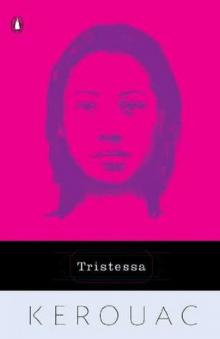 Tristessa
Tristessa On the Road
On the Road The Dharma Bums
The Dharma Bums Maggie Cassidy
Maggie Cassidy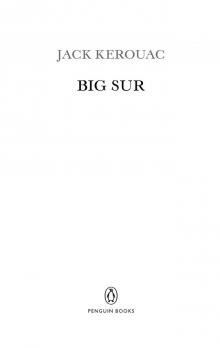 Big Sur
Big Sur Dr. Sax
Dr. Sax Vanity of Duluoz: An Adventurous Education, 1935-46
Vanity of Duluoz: An Adventurous Education, 1935-46 The Sea Is My Brother
The Sea Is My Brother The Town and the City: A Novel
The Town and the City: A Novel Atop an Underwood: Early Stories and Other Writings
Atop an Underwood: Early Stories and Other Writings Desolation Angels: A Novel
Desolation Angels: A Novel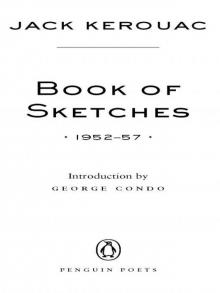 Book of Sketches
Book of Sketches Wake Up: A Life of the Buddha
Wake Up: A Life of the Buddha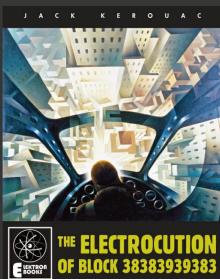 The Electrocution of Block 38383939383
The Electrocution of Block 38383939383 Haunted Life
Haunted Life Visions of Gerard
Visions of Gerard Orpheus Emerged
Orpheus Emerged Book of Blues
Book of Blues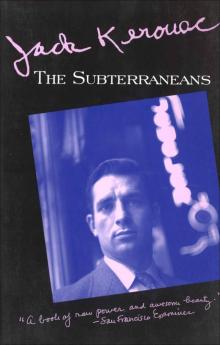 The Subterraneans
The Subterraneans The Haunted Life
The Haunted Life The Unknown Kerouac
The Unknown Kerouac The Town and the City
The Town and the City Visions of Cody
Visions of Cody Atop an Underwood
Atop an Underwood Lonesome Traveler
Lonesome Traveler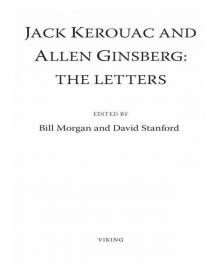 Jack Kerouac and Allen Ginsberg
Jack Kerouac and Allen Ginsberg Vanity of Duluoz
Vanity of Duluoz Desolation Angels
Desolation Angels On the Road: The Original Scroll: (Penguin Classics Deluxe Edition)
On the Road: The Original Scroll: (Penguin Classics Deluxe Edition) The Sea Is My Brother: The Lost Novel
The Sea Is My Brother: The Lost Novel Wake Up
Wake Up The Poetry of Jack Kerouac
The Poetry of Jack Kerouac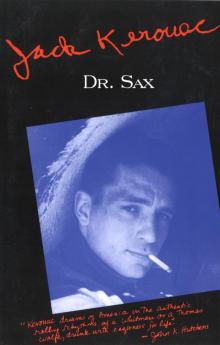 Doctor Sax
Doctor Sax